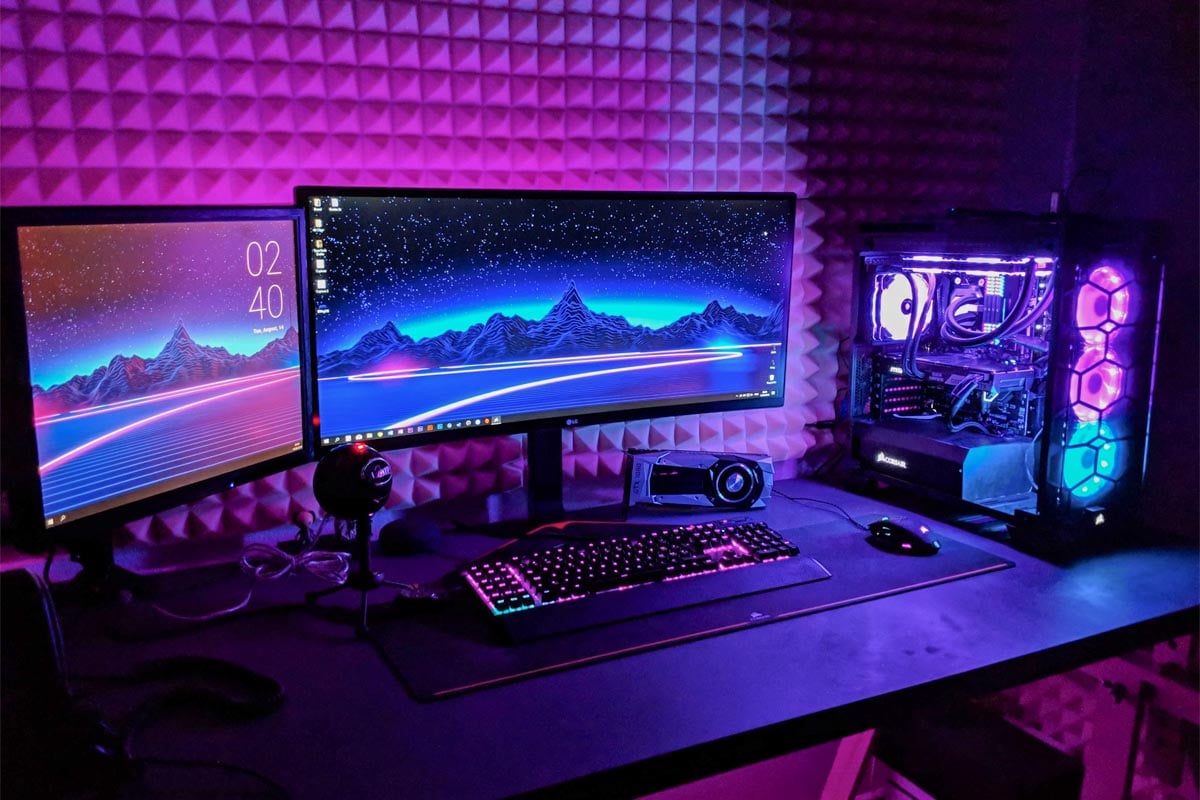
The CPU of your gaming PC acts as the brain for your system. It is responsible for sending instructions to the major components of your system, including the graphics card and RAM. The CPU is a critical part of your gaming PC as it may affect its performance and cause issues such as lags. One of the usual causes of lags and issues is a program or process having abnormally high CPU usage, causing your video game to run at a slow pace.
Here are tips on how to fix high CPU usage on your Intel gaming PC:
- Restart your PC.
- End the heavy workload processes.
- Intel® Hyper-Threading Technology
- Intel® Turbo Boost Technology
- Update your drivers.
- Scan for any malware.
- Tweak your power options.
- Reinstall Windows operating system.
1 – Restart your PC.
The easiest way to fix high CPU usage is to restart your gaming PC. Turning your system off and on is classic troubleshooting advice. Restarting your gaming PC will resolve this issue.
Rebooting your system will clear out temporary files, resolve slowdown in long-running processes, and fix high CPU usage.
2 – End the heavy workload processes.
Another quick way to fix high CPU usage is to end or restart the process of the program by using Task Manager. It is also the best method to track any programs taking too many resources from your CPU usage.
Open the Task Manager, click the Processes tab, and click “More details” at the bottom of this tab. This will reveal any background Windows processes as there are programs that hide behind their own window. Look for the “CPU” under the option tabs, and click it to order the programs by CPU usage.
Expect video games to have high CPU utilization. But there are other programs you can close that might be taking up too much of your CPU usage. This includes running multiple tabs on Chrome, antivirus scans, or video-editing applications. If you usually deal with a high CPU usage situation, causing lags while playing video games, you need to close any background programs and tabs you aren’t using. Once you’ve done that, return to Task Manager and see if it improved the CPU usage.
Here are a few solutions that can fix this issue:
- Intel® Hyper-Threading Technology
Intel® Hyper-Threading Technology is a software you can download to your system to create multiple threads of execution for each core. This will allow your CPU to handle different processes. For example, if the CPU usage of a heavy program like a video-editing application gets high, it will be efficient to use the CPU cores available to it.
- Intel® Turbo Boost Technology
Intel® Turbo Boost Technology can help boost your CPU performance. It processes heavy workloads by dynamically increasing the frequency of your CPU. It also has a feature that enables your system to automatically assign the biggest tasks to your CPU’s fastest processor cores. It also boosts the frequency of these cores for optimal performance.
3 – Update your drivers.
If the problem persists after doing the two solutions above, the next step is updating your drivers. Remember that drivers are programs that control particular hardware components connected to your motherboard. Updating drivers can eliminate any compatibility issues or bugs which might be causing an increase in CPU usage.
To update your drivers, go to the Start Menu and click Settings. Go to Updates & Security, then click “Check for Updates.” This will update any critical drivers in your gaming PC. You might also want to check utility programs from your video card manufacturer. For example, NVIDIA offers the GeForce Experience program, which works by improving the overall performance of your GPU for a better gaming experience.
Some bugs may be fixed when updating your BIOS version. The BIOS firmware is responsible for issuing instructions to the computer’s other components during its startup. Updating your BIOS may not boost the performance of your system, but it can help fix issues causing high CPU usage.
4 – Scan for any malware.
Another thing that may be causing high CPU usage is malware disguising itself as a normal Windows process. These malicious programs can use up your CPU and GPU bandwidth for different purposes, such as mining cryptocurrency. They disguise themselves as programs like RunTime Broker or Cortana in the Task Manager.
So make sure to make a habit of running a full antivirus scan to check these issues. You can also use the offline security scan by Windows Security to identify malware programs.
5 – Tweak your power options.
There are power settings that can throttle your CPU’s speed whether you’re using a laptop or desktop. So you might want to check the Power Options by clicking Start Menu and typing “Edit Power Plan” on the search box in the taskbar.
Open the Power Options and click the “Show additional plans” to enable a non-power saver plan. Click the “High performance” option to boost performance but requires your PC to run with more energy.
Once done, open the Task Manager to see if the CPU usage returns to normal.
6 – Reinstall your Windows operating system.
Another solution that can fix high CPU usage is by reinstalling your Windows. If you have a restore point before the time your issues with your CPU began, you might want to use it. If it doesn’t, your last option is to reinstall your operating system.
Windows 10 has a feature called “Reset this PC” in Settings. This will uninstall all programs but will leave any personal files alone. You will have to reinstall all the non-Windows programs you use. Just in case, you might want to back up all your personal files on the cloud or external drive.
Once you’re ready to reset your PC, click the Start button and type “Reset this PC” on the search box. Click “Get Started,” and the process may take an hour or more.
Source: